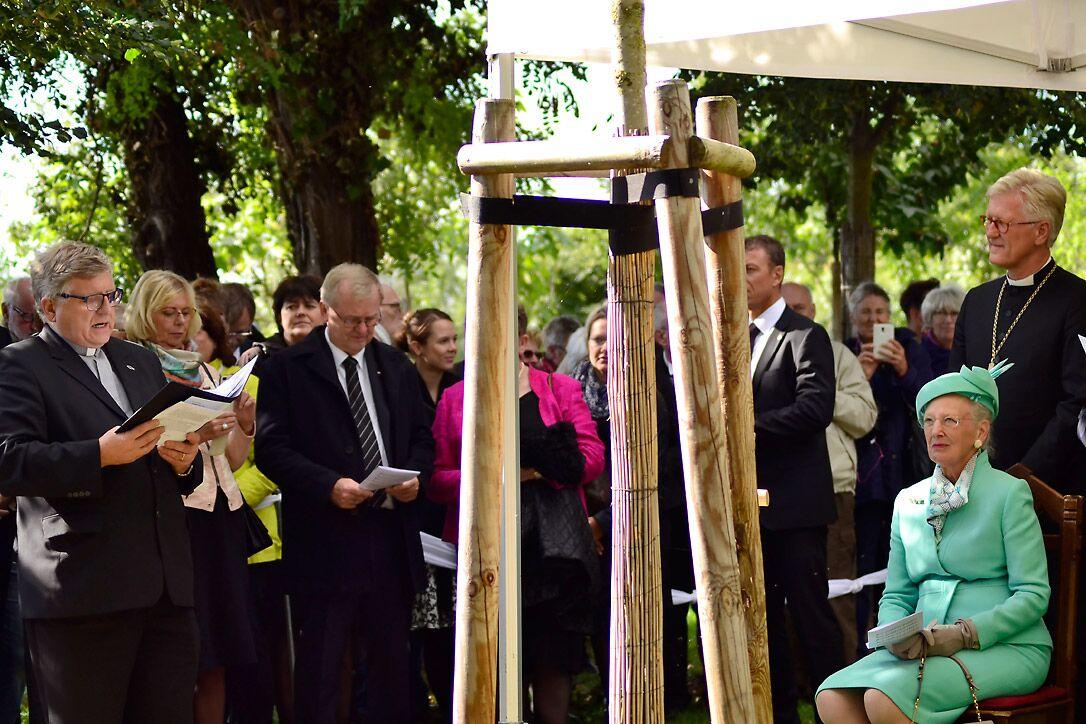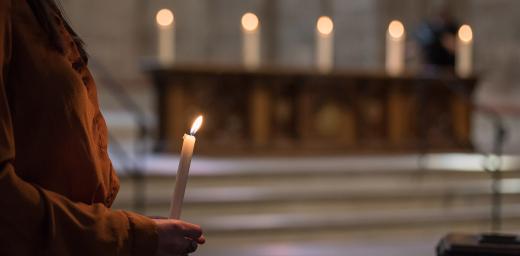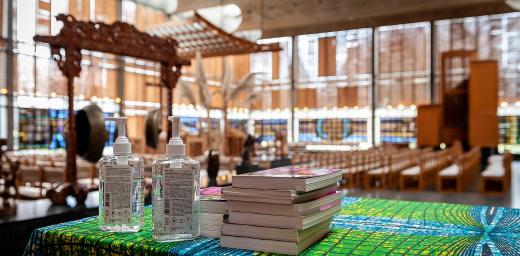Queen Margrethe II of Denmark visits Lutherstadt Wittenberg

Queen Margrethe II of Denmark attends a tree planting ceremony in the Luther Garden, Wittenberg. Photo: Felix Kalbe
Flowering ash in Luther Garden and altar cloth for Castle Church
(LWI) – Last weekend Wittenberg welcomed a prominent visitor: Queen Margrethe II of Denmark. The Queen is also head of the Evangelical Lutheran Church in Denmark.
Relations between the royal house and Wittenberg go back a long way. Denmark joined the Reformation in 1536, when the Danish church became Lutheran. The Reformer, Johannes Bugenhagen, helped to spread Lutheran teaching during his stay in Copenhagen from 1537 to 1539 on the invitation of King Christian III.
A symbol of these close links now grows in the Luther Garden, an international ecumenical project of the Lutheran World Federation (LWF). As head of the Evangelical Lutheran Church in Denmark, Queen Margarete II planted a flowering ash during her visit. It bears the biblical verse, “If we are faithful, he remains faithful – for he cannot deny himself” (2 Tim 2:13).
Ash tree enhances living monument
The flowering ash is one of the 500 trees that churches from all over the world are planting to mark the anniversary of the Reformation, with the idea being to create a “living monument” and make the significance of the Reformation visible across national borders. Already, 338 trees are growing in the Luther Garden.
At their center is a Luther rose and the sculpture Himmelskreuz (heavenly cross) that German president Joachim Gauck unveiled during the LWF Council meeting this June, together with LWF President Bishop Munib A. Younan, LWF General Secretary Rev. Dr Martin Junge and other dignitaries.
Before the symbolical planting, Queen Margarethe II took part in the reopening of Wittenberg’s Castle Church. Originally consecrated in 1503, the church has undergone a thorough refurbishment over four years, in order to prepare for the Reformation celebrations. The total cost of about EUR 7.8 million was covered by the state of Saxony-Anhalt, the federal government and private donors.
Queen offers embroidered altar cloth
Wittenberg Castle Church is one of the most important buildings in Reformation history. According to popular narrative, Martin Luther nailed his 95 Theses to its door in 1517, which triggered the Reformation. Luther lies buried in this church, which UNESCO included on its World Heritage list in 1996.
October 2, the day on which many German churches celebrate the Harvest Festival, saw the reopening of the beautifully restored Castle Church. Queen Margarethe II, a skilled embroiderer, had designed and embroidered an ornate cloth to hang from the altar.
The altar cloth is red, a liturgical color used at Pentecost and also on Reformation Day. Its central motif is the Luther rose. The Queen officially handed over her gift at the special service to reopen the Castle Church, with President Gauck and other dignitaries from church and society also present in the congregation.





